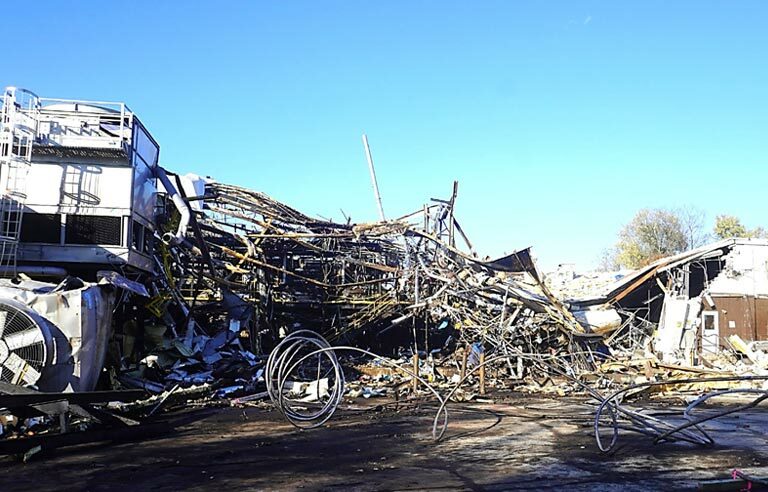
Property damage at the Givaudan facility in Louisville, KY. Photo: Chemical Safety Board
Washington — Chemicals used during the production of caramel coloring for food products have the capacity to prompt a “hazardous runaway reaction,” the Chemical Safety Board says.
CSB recently issued a second update on its ongoing investigation into the Nov. 12 incident at the Givaudan Sense Colour facility in Louisville, KY. A batch reactor vessel exploded after pressure accumulated during production of the food coloring. The blast killed two workers and seriously injured three others. It also caused extensive property damage to the facility and surrounding community.
In the update, the board reports that chemical reactivity tests show that the batch reactor mixture and an accompanying sugar ingredient carried the potential to produce a hazardous runaway reaction capable of triggering an explosion of a batch reactor similar to Givaudan’s.
CSB previously determined that internal pressures and temperatures each exceeded the vessel’s capacity design limits. The agency says the batch reactor had a vent valve designed to automatically open and close to control pressure. When the pressure and temperature within the reactor began to rise, however, the valve may not have opened despite commands to do so.
The agency says it’s continuing to conduct chemical testing, examine equipment recovered from the site and evaluate the reactor’s relief system design.
“Complete findings, analyses and recommendations, if appropriate,” will be part of a final investigation report, CSB adds.
McCraren Compliance offers a full range of safety and health training and consulting services. Plus we can help you incorporate well-being into your traditional systems in order to support the Total Worker Health of your workforce.
Call 888-758-4757, email info@mccrarencompliance.com or visit our website www.mccrarencompliance.com
Original article published by Safety+Health an NSC publication